The Reserach Group Advanced Information Systems and Technology (AIST)
Herwig Mayr, July 2018
The research group “Advanced Information Systems and Technology” of the FH OÖ F&E GmbH in Hagenberg was for a long time not called like the river that flows through Hagenberg. Actually, it has only been called that recently (2018). But research has been going on there for more than 20 years.
In the beginning the group was of course very small. A name for the group was not necessary, because all members had room in one office. Rather on a larger desk. Furthermore, this group was the only one in the research department of the Upper Austrian University of Applied Sciences in Hagenberg, which was then called “Research and Technology Development” (FORTE).
In the following overview, some highlights are highlighted to illustrate the history of the AIST research group, which is very varied, especially with regard to content. Furthermore, a short outline of the current activities of the research group is given.
All beginnings are coincidence
(1995-2002)
The project SEE-KID
In 1995, Witold Jacak, then head of the Software Engineering (SE) degree program and current Academic Director of the Upper Austria University of Applied Sciences, spent some time in a hospital in Linz. Rumor has it that during a coffee and smoking break he got into conversation with one of the hospital’s primaries, Siegfried Priglinger, who was looking for software to simulate and train strabismus surgery in children. This conversation developed into one of the first study projects for the Software Engineering course, which in 1999 resulted in a research project (“Software Engineering Environment for Knowledge-based Interactive Eye Motility Diagnostics”, SEE-KID).
This research project was the first in the Software Engineering course of study for which a paid research assistant, Michael Buchberger – an SE graduate – was employed.

SEE-KID/SEE++: First prototype from 1997 (result of a study project).
Fun Fact
The whole concept of SEE-KID was sketched by the author together with Michael Buchberger on a paper napkin during a lunch in the former student dormitory canteen. Also the acronyms “SEE-KID” and later “SEE++” were created in this way.
After the flood disaster in Upper Austria in 2002, there was a temporary substantial cutback in research funds by the province of Upper Austria, which also affected our research group and in particular the SEE-KID project. The project and the employees changed to Upper Austrian Research and later to RISC Software GmbH, where the product resulting from the project is currently being further developed and distributed worldwide under the name “SEE++” (for computer scientists obvious 😉) (www.see-kid.at).
We navigate (us into the future)
(2003 – 2008)
Virtual guide dog
In the course of the research work on strabismus surgery, close contact was established with Josef Zihl, the then director of the Max Planck Institute for Psychiatry at the Ludwig Maximilian University of Munich, who was intensively involved with brain damage and associated visual disorders (up to blindness). Through him, close contact was established with organizations that support the blind and severely visually impaired, including the Association for the Blind and Visually Impaired in Linz.
One of the persons looked after there had close contact with the company Intersport Austria, so that in this partner constellation in our research group, research was carried out from 2003 on in a nationally funded research project on navigation software for the severely visually impaired, the “Virtual Guide Dog”. Calling and controlling of software was done by a – at that time novel – arrangement of colour and shape symbols on the touch-sensitive display of the mobile device, which could be adapted in arrangement, number and colours to suit the respective visual impairment.
Both mobile devices (at that time called Mobile Digital Assistant – MDA – or Personal Digital Assistant – PDA -; smartphones did not exist for a long time) and access to GPS data had only recently become possible. Therefore, the project presented enormous challenges not only from a software point of view, but also from a hardware point of view.
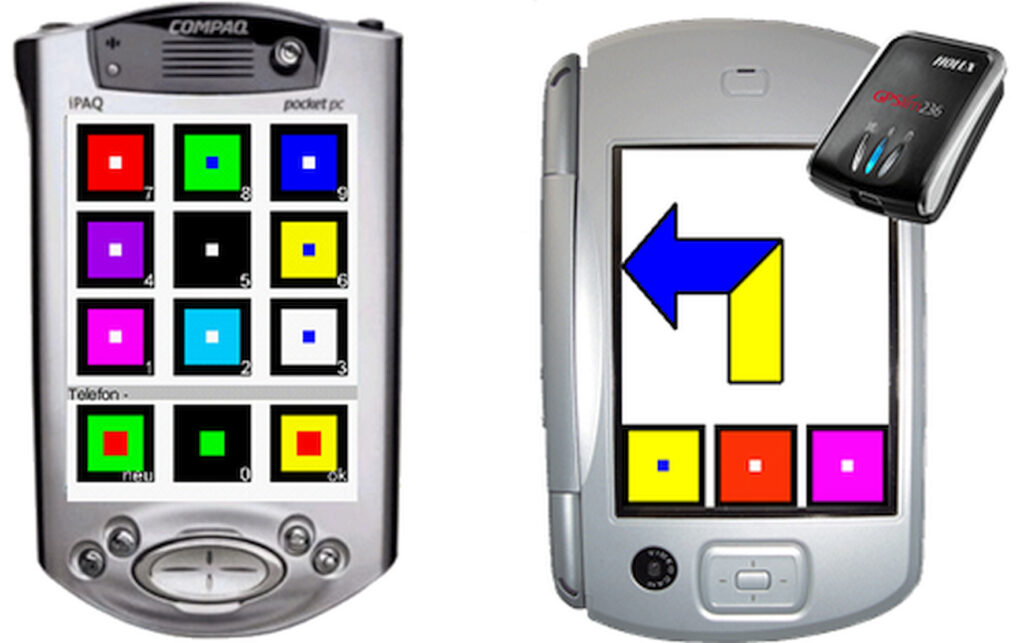
User interfaces of the communication and navigation module on mobile devices.

Use of the virtual guide dog for navigation in road traffic.
Fun Fact
Within the framework of the research project, we tried to protect the operation of mobile devices by means of symbols arranged in a grid as a utility model. Unfortunately this was not possible, otherwise the “invention” of Google and Apple smartphones would have had a completely different effect on the research group as well as the author 😉.
At the time of its development (2003 – 2006), the “Virtual Guide Dog” represented a groundbreaking innovation in the interaction of elderly and/or severely visually impaired people with computers and formed the basis for a number of subsequent research projects of the AIST research group.
In the age of Apple’s iOS and Google’s Android operating system for mobile devices, all computer users are familiar with the control of finger-operated color symbols; in the context of the development of the Virtual Guide Dog – i.e. well ahead of the products mentioned above – this concept was a central focus of research activities and it was shown that such a control enables severely visually impaired or elderly people to use modern (mobile) communication devices in an accessible way.
Compass: Navigation in the sports and leisure sector
Already during the Virtual Guide Dog project, the experience with GPS tracking and route planning was used in a project together with Intersport to support sports such as hiking, cycling etc. with mobile navigation devices and to motivate users to move more in nature through a reward system. The most innovative new feature from a research point of view was the automatic generation of route graphs from a large number of individual tracks recorded by different users. People could download this “hiking map” to their mobile device and decide during the hike in which direction they wanted to continue hiking when the tracks crossed.

Projekt Compass: A “mobile hiking map” is created from several recorded GPS tracks
Unfortunately, the project came a few years too early for the most lucrative aspect – the gamification of personal fitness. This idea was implemented commercially by graduates of another Hagenberg course a little later – when smartphones and especially the iPhone with its more willing to pay customers were already available on the market – with great success.
Transfer to the rally area
The GPS recording and monitoring system developed in the research group was adapted for use in the fitness sector (pedestrians, cyclists) as well as for vehicles and was used from 2004 – 2006 for better monitoring of rally vehicles and rapid location in case of an accident.
As an interesting side aspect, the tracks could later be evaluated and used by the rally drivers for analysis and comparison purposes.

Recorded track of a test special stage of the January rally. Especially speeds could be measured very precisely.
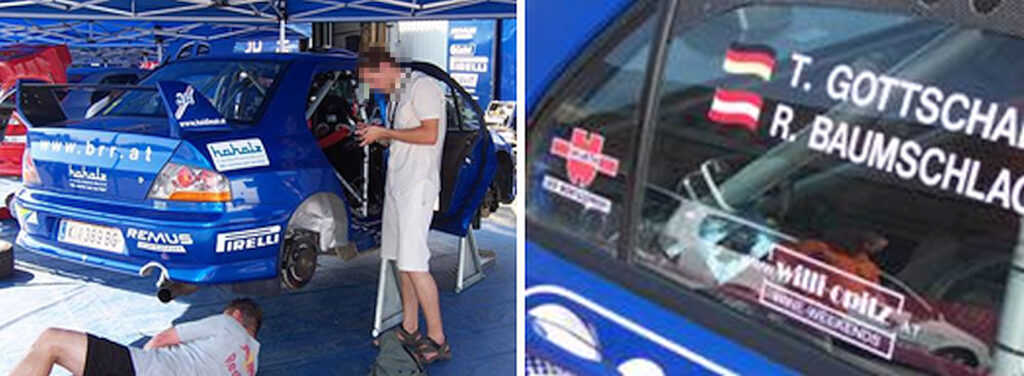
A former AIST employee (and SE graduate) installing our GPS tracker/mobile device in a rally car. He only had a few minutes time for this in the service zone.

Detail of the recorded track: Those familiar with the area will notice that for experienced local heroes, parts of the “track edge” are also passable, which for others are pure undergrowth 😉.
Fun Fact
At the request of the rally drivers, fast driven passages were visualized in green and slow driven passages in red (instead of vice versa). “Green” passages were thereby positively occupied.
Think Big: I-Navigate
Through a contact with Siemens, interest in automatic route graph generation was aroused at their subsidiary Siemens VDO in Regensburg. At that time, navigation systems were heavily dependent on (proprietary) map data that had been prepared at great expense. In a large-scale research project, the results of previous projects made it possible to adapt the data structures of the stored route graphs of Siemens navigation systems in such a way that routes that had been taken several times and were not contained in the stored route map could be automatically transferred to the navigation system. These “self-learning navigation maps” were also able to automatically record personal preferences, different travel times in different weather conditions, etc., and incorporate them into future route planning.

Automatic addition of new routes to navigation maps.
Fun Fact
Parts of the Siemens navigation department in Eindhoven, which further developed the results of the I-Navigate project, were later sold to TomTom. A small part of the TomTom “IQ-Routes” therefore probably originated in Hagenberg.
A new buzzword: „e-Health“
(2008 – 2013)
The networking of information systems in the medical and health sectors progressed rapidly in the mid-1990s. Concepts were written, the Austrian initiative for an “Electronic Health Record” was launched (ELGA, from 2010 supported by a limited liability company and the basic law) and standardisation efforts were initiated both in Europe (epSOS) and worldwide (Initiative Integrating the Healthcare Enterprise – IHE).
Fun Fact
One of the two current managing directors of the Austrian ELGA GmbH, Franz Leisch, is an SE (for medicine) graduate. He also studied medicine.
For this reason, the province of Upper Austria also wanted to occupy the topic (under the new buzzword “e-health”). Since the research group’s growing focus on medicine and health was more or less appropriate (in addition to the GPS recordings, further vital data had begun to be recorded), it was suggested that the Upper Austrian University of Applied Sciences should “fly the flag” and our research group was given a name for the first time: “e-Health – Integrated Care”. This also marked the way for the next research projects.
Ahead of its time: IHExplorer
The experience gained from previous projects in graph analysis and visualization could be successfully transferred to the medical and health care sector: After a meeting of several persons active in the health sector, including Martin Tiani (Austria’s representative in the IHE worldwide as well as in the EU initiative epSOS) and Wolfgang Hießl (e-Health representative of the Province of Upper Austria), the nationally funded project “IHExplorer” was launched, which aimed at the preparation, visualization and analysis of patient-related information flows in health care facilities based on IHE-compliant data exchange and defined IHE profiles. From today’s perspective, this project can be described as the first Data Science project of the AIST research group. Thankfully, Josef Altmann (today head of the FH study program Communication/Knowledge/Media, then Professor for Data Engineering) took over the leadership of the IHExplorer project.
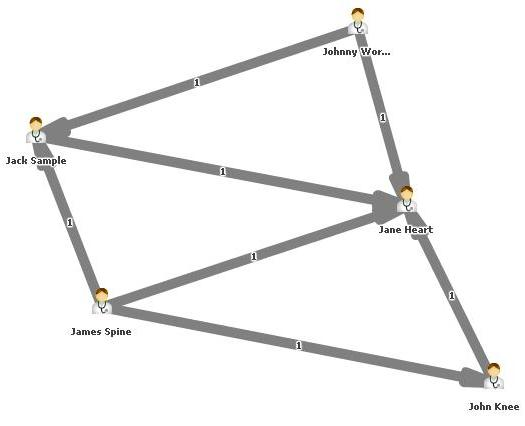
Collaboration network, generated from the IHE protocol data of a treatment process
The results were highly successful and received an impressive reception from the e-health partners. However, the implementation was difficult for concrete, daily processes at health service providers. Although many standards and process descriptions existed on paper, it would take years to introduce and implement them to the point where the results of IHExplorer could be put to good use.
The description of the objectives of the IHExplorer project proposal to the FFG in 2010 makes this clear: “Increasing effectiveness and efficiency in the healthcare sector requires consistent, integrated and standards-based medical information systems that provide data not only on a departmental basis, but also across institutions and patients throughout the treatment process. A prerequisite for this is the traceability of the processes. As a solution, an approach for the visualization and analysis of transactions based on IHE is proposed and presented by means of a prototypical implementation. The results will be evaluated and potential benefits for research in the e-health environment in general and for IHE-compliant applications in particular will be shown.” This text would probably still pass as eligible for funding today – the project was definitely (once again) ahead of its time.
Easier at that time: exchange of care-related data (e-Care / PIN)
Since in the medical environment, standard-compliant data exchange and analysis should not be possible for some time to come due to a lack of standardization and waiting for ELGA to be established, the next projects were started on a “side stage”. Nursing-related data were also relevant for the exchange, especially in connection with hospital stays (day admissions, doctor’s visits to nursing homes, etc.), but the regulations for this were easier to fulfil or did not yet exist (and could thus be defined by a research project).
In two successive projects, “e-Care – patient-oriented care information” and “PIN – patient-related, integrated care networks”, the foundations were laid in close cooperation with the Linz campus of the Upper Austrian University of Applied Sciences (contact person was Markus Lehner, who also headed the project) for electronically networking home care and health care facilities and providing all professionals working in care with access to current patient data.
Fun Fact
For the regular collection of vital data, bunks were set up in old people’s and nursing homes to give the residents privacy during the measurement process. In one home, this almost failed because the residents were afraid that they would then no longer have a place to put up the Christmas tree.
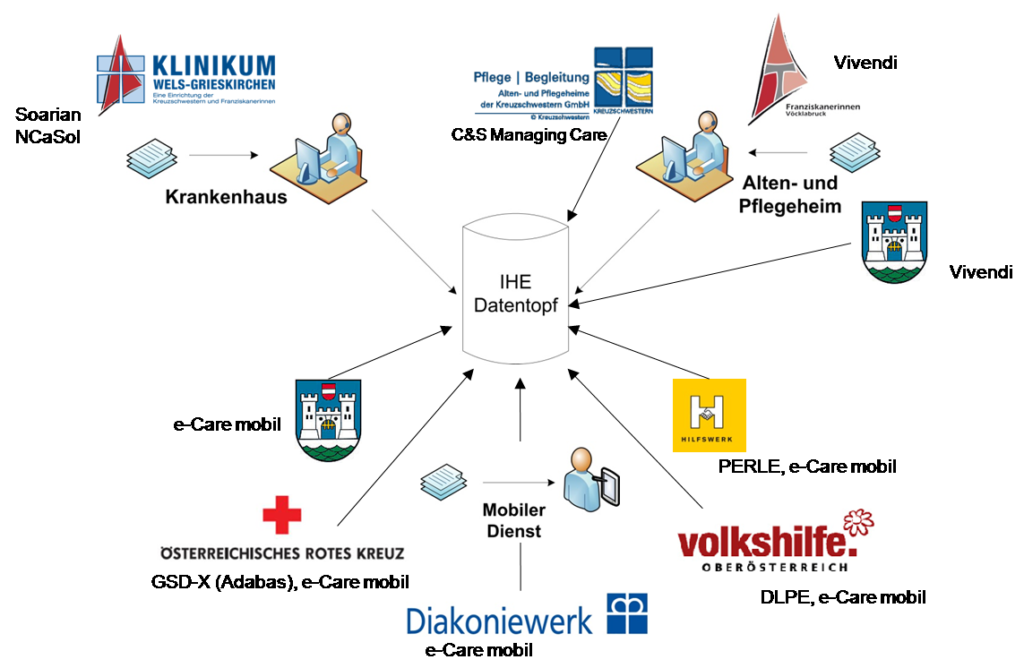
e-Care/PIN: Organisations involved and documentation systems used.
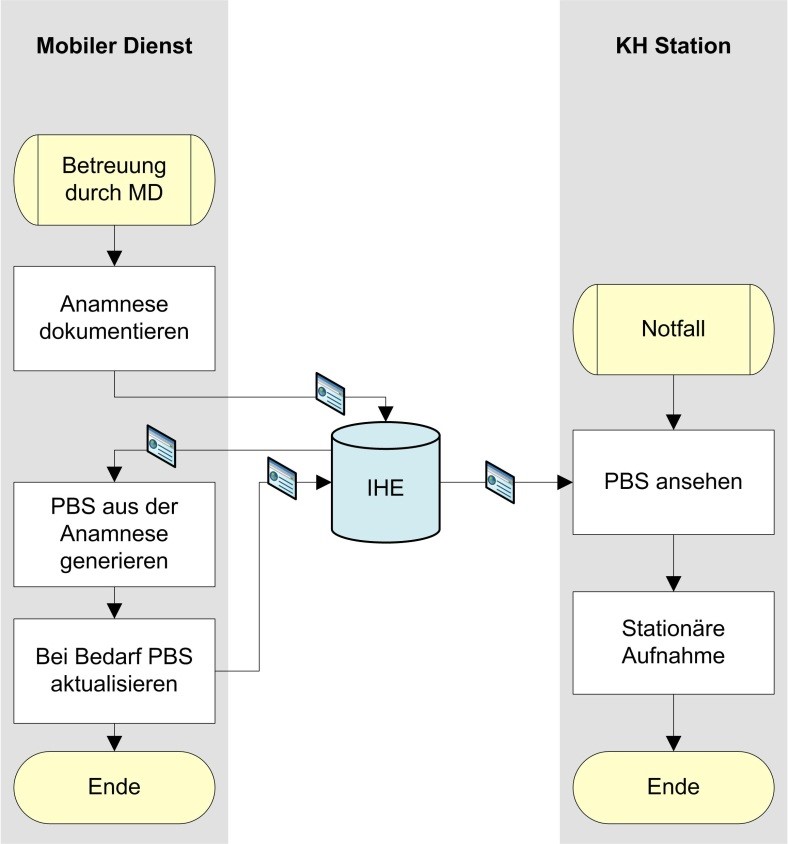
Optimized communication processes after the introduction of e-Care.
From 2012 it became apparent that the introduction of ELGA throughout Austria would be (significantly) delayed. Institutions and companies in the medical and health care sector were increasingly hesitant to take (research) money in the area of medical information systems and their integration. Our “e-Health” research group, which like all other research groups at FH OÖ F&E-GmbH has no access to any basic financing, was in danger of “starving” financially.
In 2013, the then Steering Committee therefore decided to diversify more and to interpret the term “e-Health” rather (very) broadly. For a few years, the running gag in the research group was to establish an e-health connection with every new research project that came on stream, no matter how far-fetched it was. The then head of the Research Center Hagenberg of the FH OÖ F&E GmbH, Thomas Kern, can tell you a thing or two about it.
e-Health is ailing – Where else can you get research money?
(2013 – 2018)
Research is currently being conducted in four main areas, two of which still have a strong link to medicine/health:
- Use of virtual reality, augmented reality and mixed reality techniques,
- Innovations in the radiology sector,
- Monitoring the (operational) safety of systems,
- Data Science: data acquisition, tracking, visualization, analysis, forecasting.
In the following, exemplary projects are outlined which have been carried out in recent years or are currently being carried out.
VR/AR/MR-Technology
Due to the return of Gerald Zwettler (a graduate of SE for medicine) to Hagenberg in the areas of teaching and research and the associated strengthening of the management team of the AIST research group, more projects can now be applied for and worked on that use image processing methods to improve VR/AR/MR systems or make them more widely applicable.
For example, driving training simulators will be enriched with novel input and visualization concepts (real passenger car as input device, VR simulation in connection with a 5-axis motion platform), mixed reality systems intended for indoor use (e.g. Microsoft HoloLens) will be adapted for outdoor use (augmented training tracks in driving technique centers) or therapies will be made possible in the home, which previously could only be carried out under the supervision of qualified personnel (virtual mirror therapy for people with paralysis).

Drive 4 Knowledge: Modernization of simulators.

Drive 4 Knowledge: Virtual training simulator with vital data measurement.
Fun Fact
For the virtual training simulation, a simulator based on a real Formula 3 monocoque was available in the research group’s rooms for a year, which prompted several employees to work countless “voluntary overtime hours”.
Concepts of Mixed Reality form an essential basis for so-called “Combined Games”, board games that are supplemented by information and processes visible and/or changeable with smartphones or smart glasses. In this area, AIST has developed a very fruitful cooperation with the PIE-Lab, a research group of the FH OÖ Hagenberg in the field of modern media, which has led to several spin-off projects.

i2f Combined Game: Ein Forschungsprojekt mit PIE-Lab für Rudy Games im Brettspielbereich.
Innovative imaging information systems
More than 99% of the data volume in the health sector will be accounted for by image and video data exchange in the future. Being able to provide this data correctly, time-efficiently and cost-effectively at the right time and in the right place to authorized persons opens up many research topics. New standards such as HL7 Fast Healthcare Interoperability Ressources (FHIR) enable highly efficient image data exchange, which is essential for the smooth running of medical boards, for example, but also enables a simultaneous second assessment during a radiological examination.
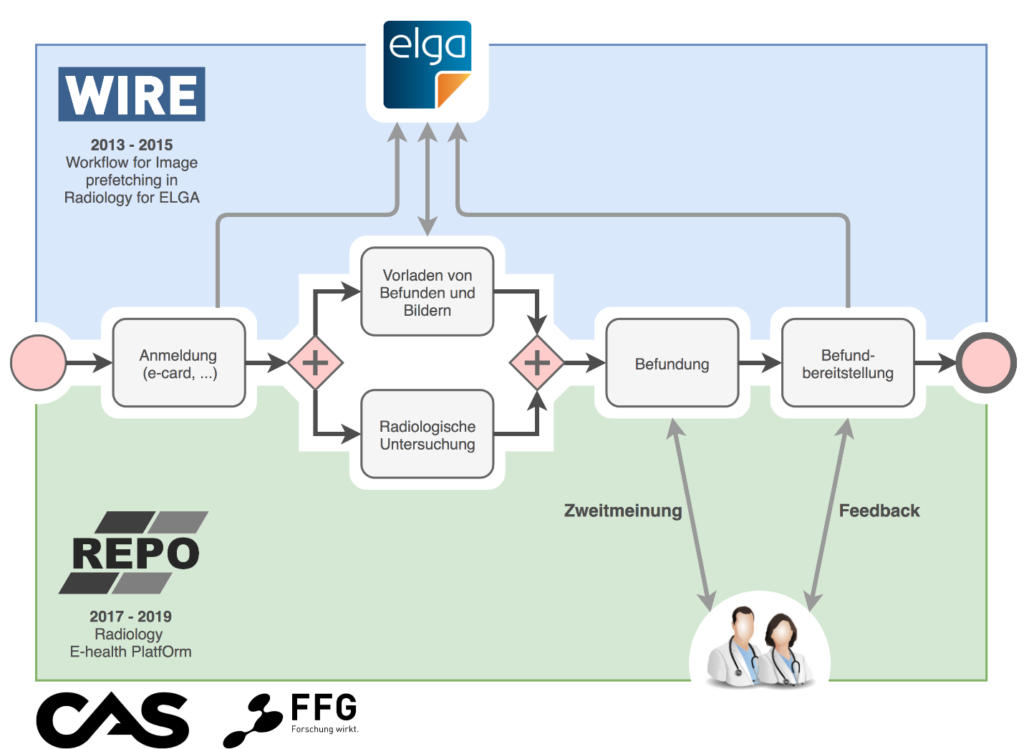
WIRE and REPO: Two projects to improve the radiology workflow.
Emmanuel Helm, a member of the management team of the research group AIST, is a consultant for ELGA GmbH due to his expertise. He and his colleague Andreas Schuler are board members of DICOM Austria, their colleague Barbara Traxler is a board member of HL7 Austria. Another member of the management team, Oliver Krauss, is together with Andreas Schuler on the road at HL7 meetings worldwide to define or adapt the relevant areas of FHIR so that in the future an even better image data exchange will be possible.
Improvement of the operating safety
Operating safety often goes hand in hand with enabling operation for people with disabilities. In our research group, for example, a “Smart Shower” has been developed with a shower enclosure manufacturer, which enables contactless operation of the shower control unit, but also monitors parameters such as water temperature, water quantity, shower duration, etc. and can trigger an alarm in the event of a suspected accident. Similar concepts are being implemented in a number of projects with the manufacturer of modern emergency call systems for elevator systems, supplemented by the possibility of triggering alarms for e.g. deaf-mute elevator users. Furthermore, predictive maintenance can be implemented efficiently and effectively due to the available sensor technology.
Data science topics
Along the entire Data Science workflow, many new projects have resulted and will result in the future (due to the stronger presence of the topic due to the start of the Master’s program Data Science and Engineering in autumn 2017), from data acquisition and processing (e.g. tracking of laundry trolleys and the garments they contain for large-scale dry-cleaning), analysis (evaluation of the use and effect of customer loyalty programs), visualization (operation of complex elevator systems, e.g. in large shopping centers) and machine learning-based forecasting systems (e.g. creation of suitable menu sequences and menus). In the data science research area, the largest increases in terms of volume are expected in the next few years, as the topic is currently being dealt with much less than desired in many companies due to a lack of experts.
Towards new times
(2018 - MAXINT)
Due to the diversification of research activities in recent years, it has become necessary to rename the institute with a name that fits its content. Information systems were at the beginning of the group and still form the bracket; technology at the cutting edge (or only in the near future – hopefully – “maturing” technology) is essential for this. Therefore, as of 1 January 2018, following a unanimous decision by the Steering Committee (and approved by the Faculty Council), a proposal was made to rename the research group to “Advanced Information Systems and Technology” (AIST).
The research group AIST currently (mid 2018) consists of about 20 members, about 10 full-time equivalents of which are employed in the F&E GmbH. The management team consists of 6 people, who all have project management and cost center responsibilities.
Four members of the management team (Herwig Mayr, Andreas Schuler, Barbara Traxler and Gerald Zwettler) are employed in the study company. All members are working on their doctorate or have already completed it. All members (except Herwig Mayr 😉) are graduates of the Software Engineering course (or one of its “derivatives”).
The research group regularly organizes excursions, ski days and the like. The last one took us to the airport Schwechat in May 2018 with a visit to the airplane hangar, thankfully financed by our long-time research partner Thomas Peterseil, owner of RealSim.
Much of Hagenberg follows the unofficial motto of Bruno Buchberger, founder of the academic side of Hagenberg: “We do everything that is fun and makes money”. This is especially true for the AIST research group, and is intended to carry it – along with the necessary research curiosity and scientific thoroughness – into the next 25 years. True to this motto, I would like to thank all my companions in and around our research group and wish them all also for the future:
“Have fun!“
